You’ve planned the project. You’ve assembled an able team. You’ve implemented. Now you can sit back and watch the process unfold. Planning is only the beginning. Things go wrong and things change. If you’re not able to respond quickly and adapt, then the project becomes derailed.
Managing a project isn’t an abstract concept. It’s the application of careful planning and processes with an emphasis on practicality. The pragmatist isn’t going to roll the dice and hope their number comes up. They’re engaged and measure the progress of the project. It’s the only way to make sure you execute the plan effectively, meeting the objectives and goals of the project.
That’s all well and good, but how does one measure project progress? Glad you asked! No matter what industry you’re in, whatever project you’re leading, these tips on measuring your progress are sure to help your project achieve success.
Why Is It Important to Measure Project Progress?
Without measuring project progress, it’s impossible to understand how the project is unfolding and whether it’s on target. The earlier problems are spotted, the easier it is to implement corrective measures and reduce risk. Data that measure project progress also helps keep team members accountable for their deadlines. It isn’t just a best practice to measure project progress, it’s an integral part of project success.
ProjectManager is online project management software that has robust Gantt charts on which you can link all four types of task dependencies and even filter for the critical path. But most impressive is that once you’ve planned your project, the Gantt chart lets you set a baseline, which captures the plan. Our software then tracks your actual progress in real time so you can always see where you are in the project, helping project managers stay on schedule. Get started with ProjectManager today for free.
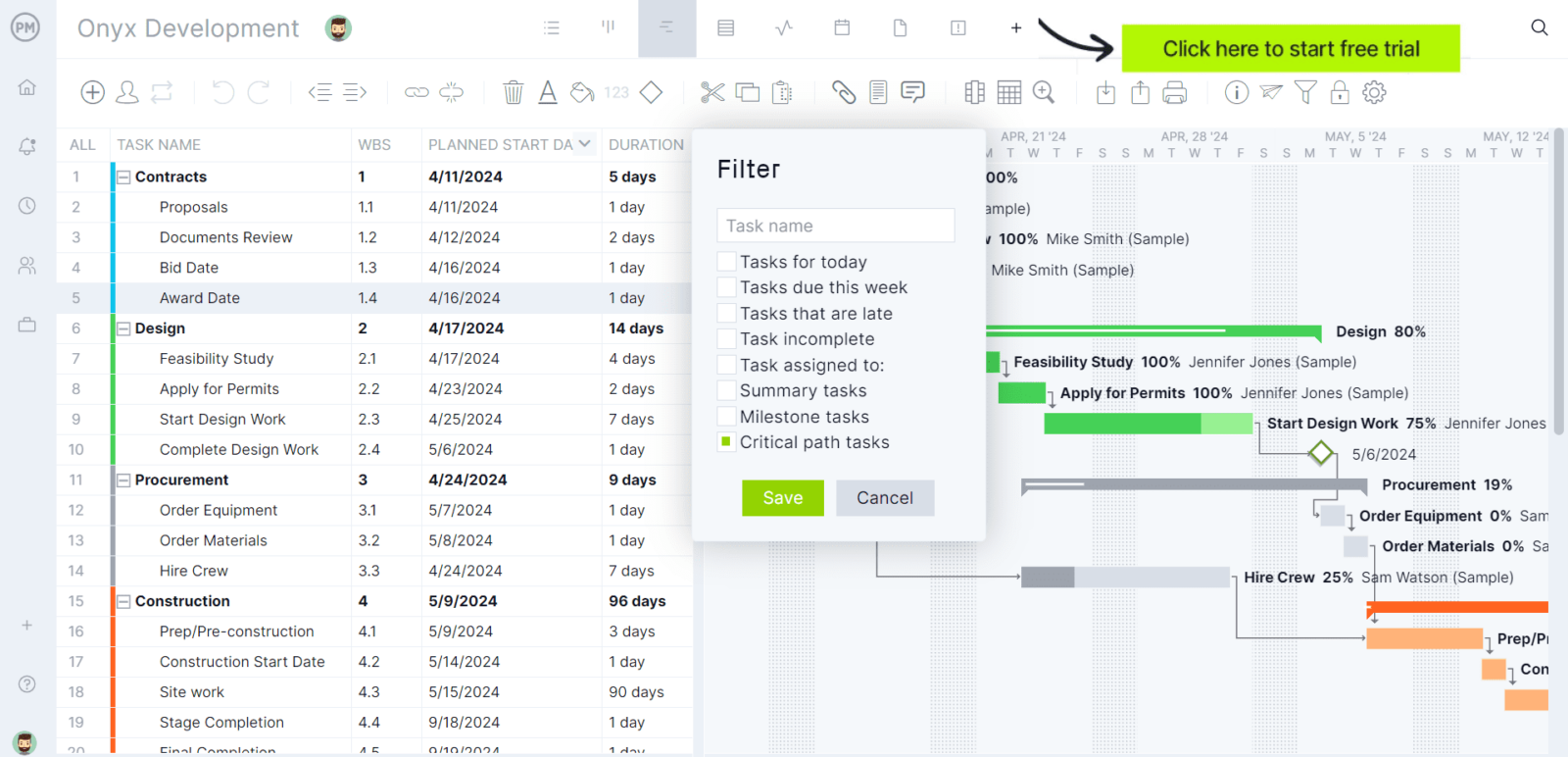
Who Should Measure Project Progress?
While traditional project managers are heavily involved in measuring project progress, they aren’t the only responsible party within an organization.
- Project Manager: The project manager helps move the project forward through each phase and will closely monitor its progress.
- Project Sponsors: A project sponsor wants to ensure the project’s success so that the organization gets value from it, so this role may also be involved.
- Project Management Office (PMO): If there’s a PMO, they prioritize things like strategic alignment, portfolio management and process improvement, so they will want to be involved in tracking project progress.
- Department Heads and Functional Managers: Department heads and functional managers measure project progress to ensure their team members are contributing to the project as efficiently as possible.
- Top Management Team: These teams are heavily involved in ensuring projects are delivering value, so they have a vested interest in measuring project progress.
- Business Owners: Small businesses might not have traditional project managers. In this case, the business owner might track the project’s progress.
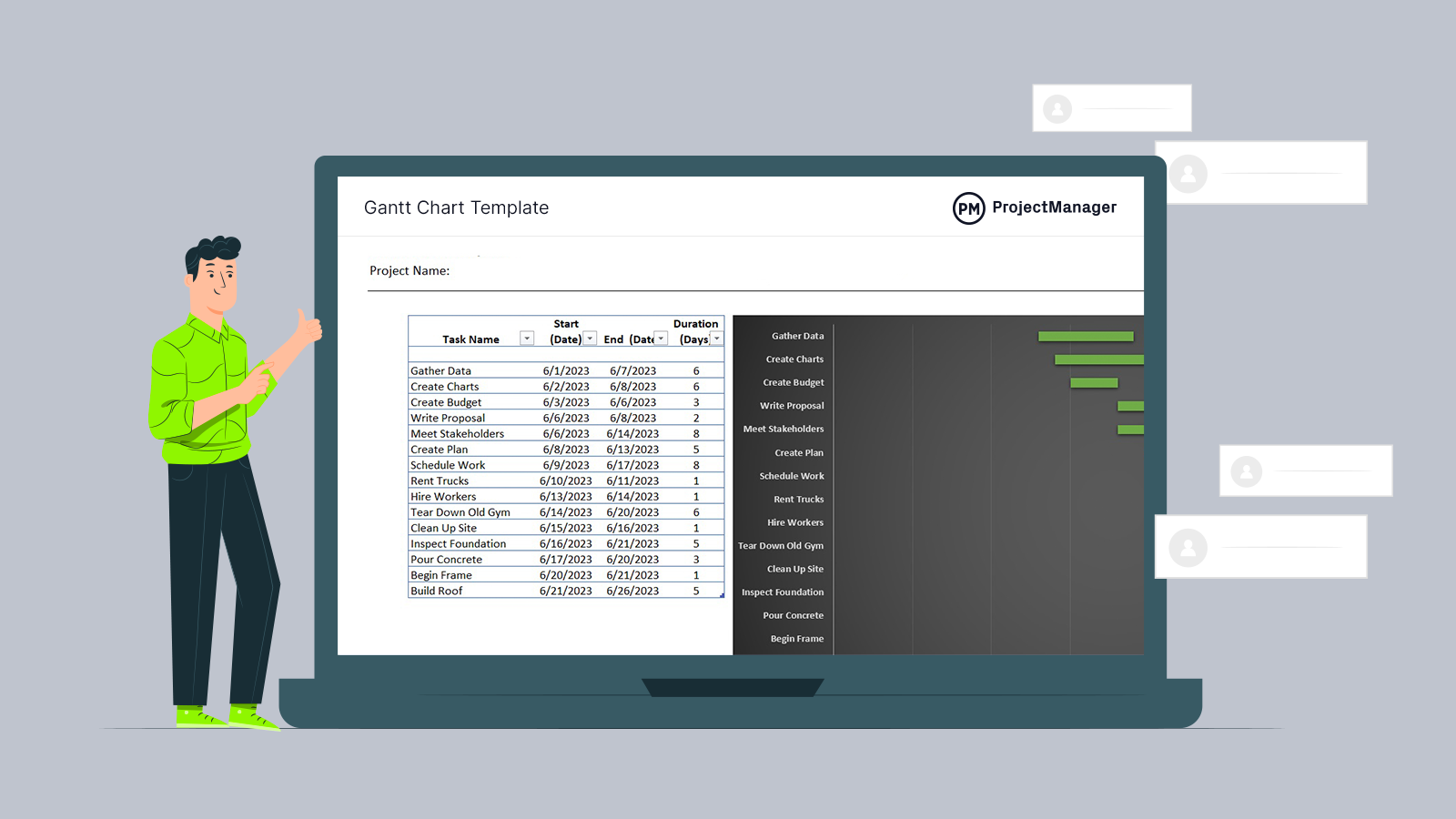
Get your free
Gantt Chart Template
Use this free Gantt Chart Template to manage your projects better.
Get the Template
Project Progress Tracking Tools
Tools have been helping people for millennia, and they can assist in measuring the progress of your project, especially since there are project management tools that have been designed to help manage projects. They’re easy to use and should be in the arsenal of anyone who’s in charge of driving a project to a successful end. Here are the most commonly used tools for tracking project progress.
Gantt Charts
For example, a Gantt chart is made up of a spreadsheet on one side and a visual timeline on the other. This allows you to organize tasks and then see them as points that connect the start of the project to the end. This visual map makes it easy to see where you are in a project at a glance. Use the Gantt chart to assign tasks, determine a deadline and even link tasks that are dependent on one another, so you can’t start “task B” until you finish “task A.”
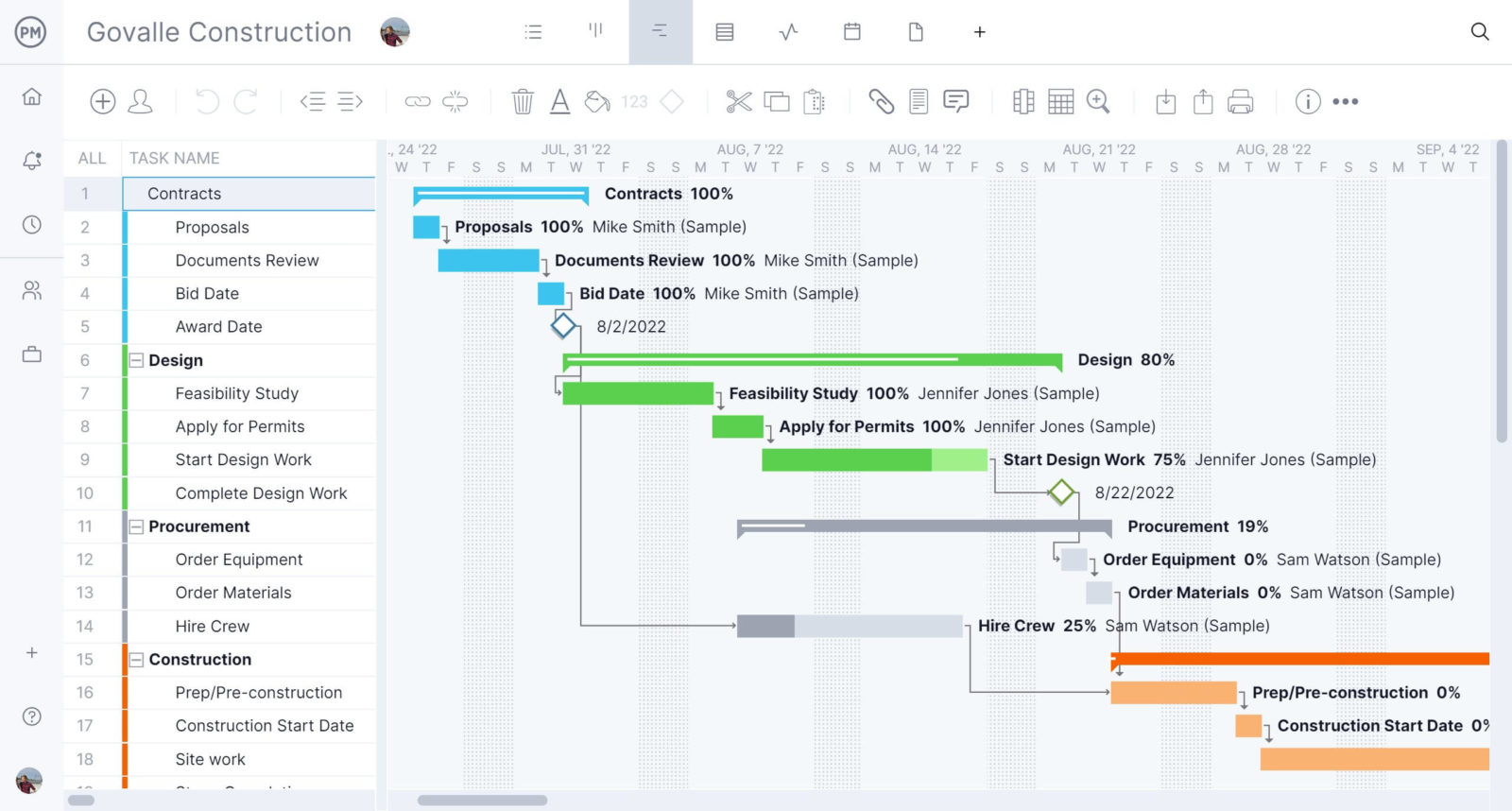
That keeps teams working. You avoid having someone blocked and idle as they wait for another person to finish their dependent task. And if your tool is online, you can track the progress of the team and see as their tasks move towards completion.
Project Management Dashboards
Another handy tool to look for is a project dashboard. A well-made dashboard should collect all the metrics of your project in simple graphs and charts automatically, allowing you to see at a glance where you are in the project. Plus, if it’s online, then it’s updating with real-time data, so you’re not stuck looking at past progress, but where the project presently stands.
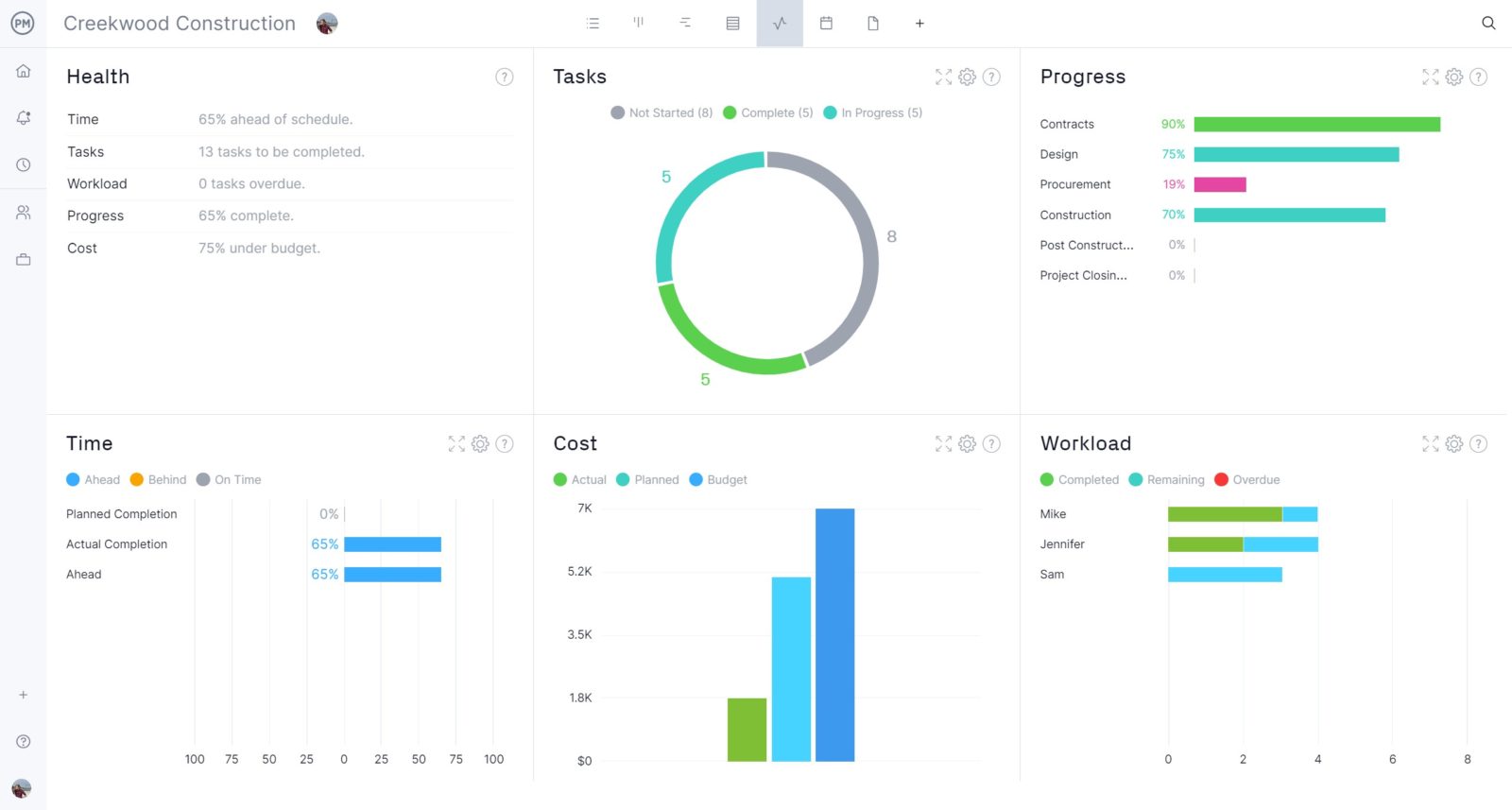
Kanban Boards
Kanban boards are another helpful tool for project tracking and measuring progress. They are highly customizable and break projects down visually into different stages. As team members work on their task list, they can simply drag and drop tasks into the next phase, collaborating with other team members along the way. Kanban board tools are ideal for projects that have clear workflows with well-defined stages.
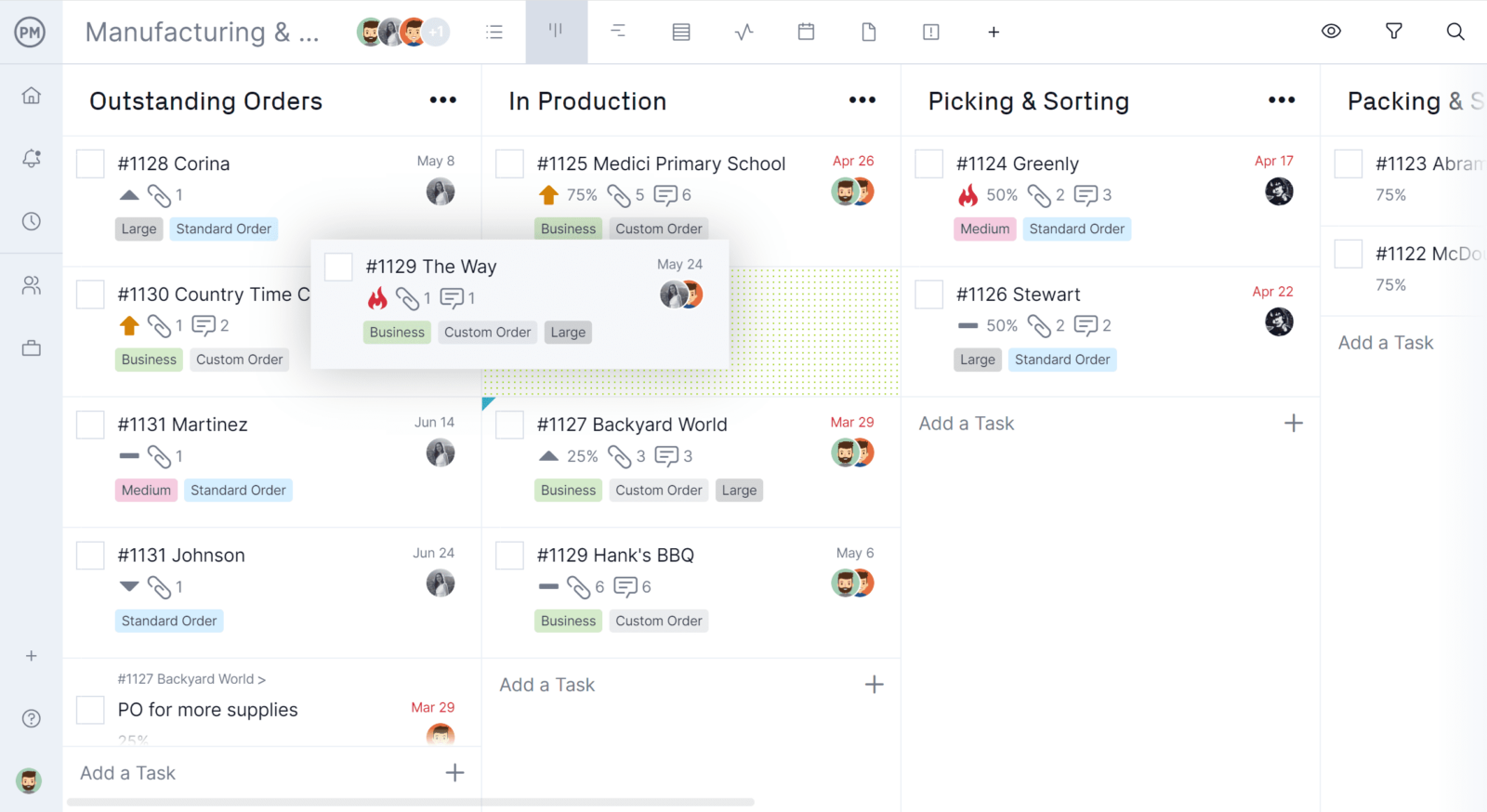
Project Progress Reports
Project progress reports offer a clear snapshot of the project’s current status. This means it’s easy to identify issues early and make data-driven decisions regarding budget adjustments, resource allocation or risk mitigation efforts. They also help facilitate communication between project teams, management and stakeholders, ensuring everyone is aligned on expectations.
Project Status Reports
Another helpful tool for measuring project progress is a project status report. These are concise and timely updates on how a project is progressing. This high-level information helps project teams and stakeholders understand at a glance the current state of the project. They’re particularly useful for tracking the project’s progress against the project plan.
How to Measure Project Progress
We’ve talked a lot about the importance of project progress, but we haven’t discussed the specific steps on how to measure it.
1. Define the Project Scope, Timeline and Budget
Start by defining the project’s scope, timeline and budget. These will act as the foundation for a successful project and can make it easier to track project progress. Be sure to include the primary goal of the project, tangible outcomes, project constraints, a work breakdown structure and project exclusions. It’s also important to get stakeholder approval so everyone is in alignment.
2. Establish Project Baselines Before the Project Starts
Think of the project baselines as a reference point that can be looked at throughout the project. They are helpful metrics that help determine if the project is progressing as it should or if it has veered off track.
- Scope Baseline: The scope baseline includes the scope statement, a work breakdown structure and a WBS dictionary.
- Schedule Baseline: The schedule baseline is an approved version of the project schedule, including the planned start and finish dates for activities and milestones.
- Cost Baseline: This is the approved project that’s broken down over time. The cost baseline acts as a time-phased budget that estimates the project’s total costs.
3. Use Progress Tracking Tools to Compare Actual Results Against the Baselines
Several tracking tools can help track the actual progress of the project against what was set as a baseline. Gantt charts are one of the most integral tools in tracking project progress as it’s easy to oversee timelines and planned versus actual data. Resource management tools are also helpful in tracking time as well as customizable dashboards and reports.
4. Make a Project Progress Report
This document offers a summary of the project’s current status. Ideally, these will be concise so that team members can gather important information about the project at a glance. Some common components of this report include an executive summary, project overview, progress report, risk assessment and budget status.

5. Monitor Resource Utilization and Costs
How effectively are resources being used within the project? This is information that resource utilization can provide. If resources are being under or over-utilized, it can impact costs. Some resources may sit idly while others are stretched thin. This is why it’s important to keep an eye on how and when they are being used.
Progress Report Template
To make it even easier to put together a progress report, we recommend downloading our free progress report template for Word. It has information on how far the project has progressed versus where it is expected to be.
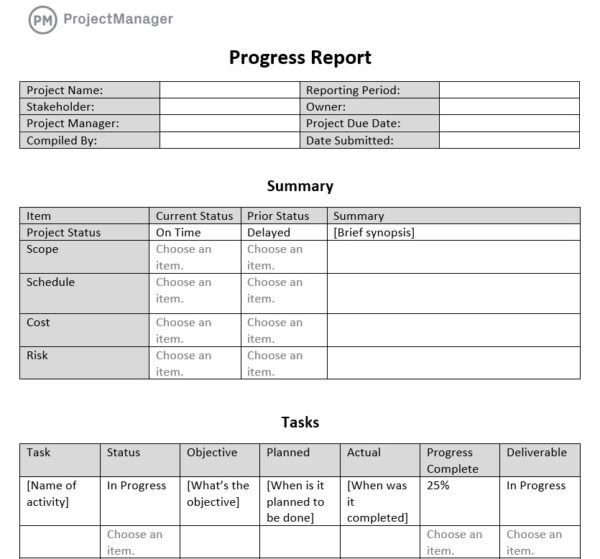
ProjectManager Is the Perfect Tool to Track Project Progress
ProjectManager is an award-winning project management software that has countless tools to track progress in real time. Unlike static templates, all data across project views update as team members enter information so it’s easy to compare the most recent data with what was originally planned.
Multiple Project Tracking Tools
There are multiple project tracking tools in ProjectManager including Gantt charts, kanban boards and dashboards. The Gantt chart view is an excellent spot for adding milestones to the project plan where teams can monitor progress. Kanban boards are ideal for visual workflows and tracking production, so it’s easy to see when there’s a bottleneck that requires attention. Project and portfolio dashboards monitor important metrics such as cost, workload and progress in real time. All calculations are done automatically, so no manual configuration is required.

Robust Project Reporting Features
Reporting is another powerful facet of ProjectManager that can help measure project progress. Any project management report can be shared online, printed or made into a PDF. Common reports include portfolio status, project status, project plan and timesheet reports. Feel free to filter reports by column and share them with stakeholders to let them know if the project is on schedule.
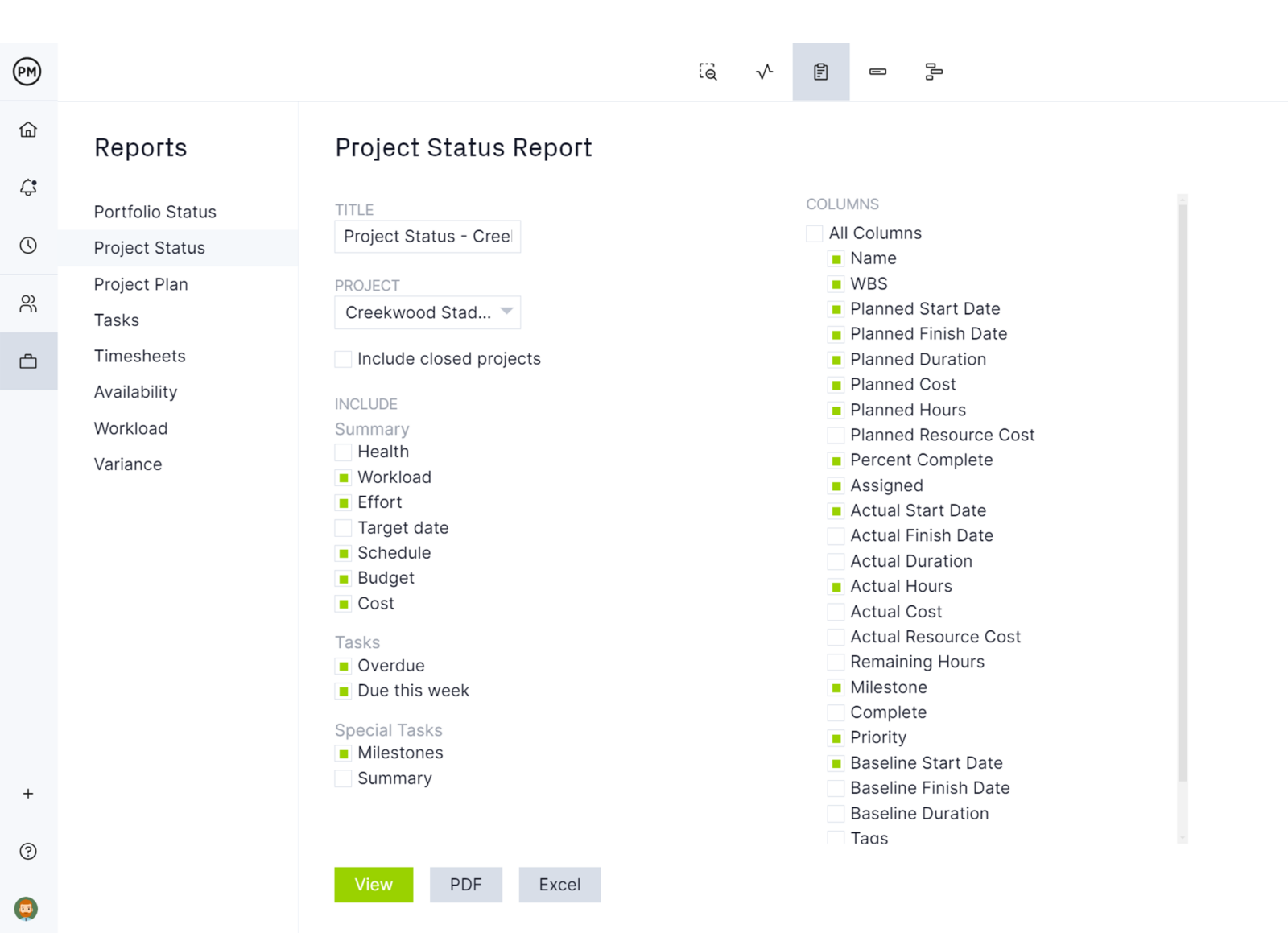
Project Progress Tracking Best Practices
As key takeaways, we’ve outlined some of the most noteworthy best practices regarding project tracking that can be implemented into an upcoming project.
Get the Team Involved
Collaboration isn’t just a buzzword, it’s a proven method for innovation and, more importantly in our context, for staying on track. Your team is your most valuable resource, but they’re more than just a group of people who take orders.
Get the team involved from the get-go. There are many reasons why it’s good to plan with your team. For one, there’s the obvious buy-in it brings to the team, which is important, as an engaged team is going to help you stay on track.
Start with the planning process, but don’t taper off on seeking your team’s advice. Remember, they’re on the project’s front lines and will be privy to information first. Set up regular check-ins with team members throughout the life cycle of the project.
Begin With the End in Mind
To measure progress, you must know where you’re going. When you use your imagination to visualize your goal, you have a better chance of making it a reality. This also helps you determine what steps are necessary to reach that endpoint.
The worst thing you can do as a project progresses is to drift away from your goal as issues arise. By having the end in sight from the start, you have a benchmark to measure your actions and decisions. This will keep you on track and allow you to measure progress more accurately.
No matter where you are in the project, you can apply the concept of “begin with the end in mind.” It’s a great way to reset your priorities, but it can also provide a measure each day to track the distance from where you are to where you want to go.
Plan Milestones
Milestones are a way to indicate the beginning and the end of major phases in the project. They’re a helpful tool for scheduling a project into digestible parts, and they can help you measure the progress of the project.
Each time you achieve a project milestone you can see if you’ve reached it as planned. This is a great way to measure progress on a large scale, but you can also create milestones that work on a more gradual level to track progress.
For example, by creating milestones tailored to the tasks assigned to individuals on your team, you can track the progress of everyone. Team members are instrumental in the overall progress of the project, so by measuring their individual progress, you have a clear view of how the project is progressing.
Related: Using Earned Value Management to Measure Project Performance
Set Deadlines
It seems obvious, but deadlines are what keep any project on track. Without a due date, there’s going to be slack. It’s unavoidable. If your team has an open-ended schedule, they’re going to use that time. There’ll be no sense of real urgency.
But deadlines aren’t just a way to keep the project on track. They can also act as a metric to measure the progress of that project. By setting a number of deadlines to meet, you have given yourself markers across the project schedule, which can be used to measure whether or not you’re meeting your planned progress.
If you’re looking to find a simple and effective way to measure the progress of your project, see what ProjectManager has to offer. Its real-time dashboard gives you a clear picture of the project’s progress across many metrics, and its online Gantt chart is a great way to keep on schedule and monitor the progress of the team as they accomplish their tasks. Get started with ProjectManager today with this free 30-day trial.

